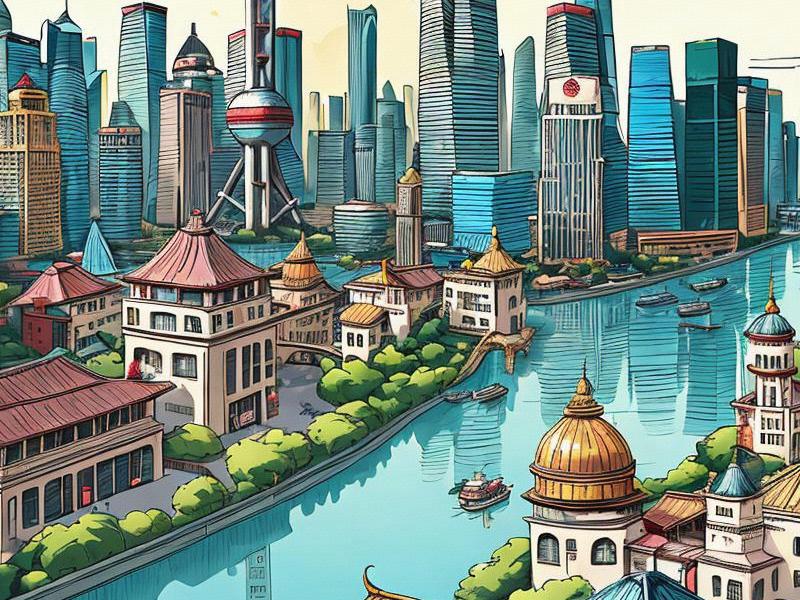Shanghai and Surrounding Areas: A Comprehensive Overview of the Dynamic Metropolis and Its Vicinity
⏱ 2025-04-23 00:25 🔖 爱上海千花网
📢0℃

Nestled along the eastern coast of China, Shanghai is a city that seamlessly blends the old with the new. Known as the "Pearl of the Orient," it is not only a major international financial center but also a hub for culture, fashion, and innovation. The city's skyline, dominated by iconic structures like the Oriental Pearl Tower and the Shanghai Tower, is a testament to its rapid urban development.
The Bund, a historic waterfront area, showcases the contrast between Shanghai's colonial past and its modern present. Once a bustling port where British and American merchants conducted business, the Bund now features a stunning array of Art Deco buildings that have been beautifully preserved. At night, these buildings are illuminated, creating a magical atmosphere that draws both locals and tourists.
Pudong, on the other side of the Huangpu River, is a symbol of Shanghai's economic prowess. This area has transformed from farmland to a futuristic district filled with skyscrapers, including the world's second-tallest building, the Shanghai Tower. Pudong is home to the Lujiazui Financial District, where some of the world's largest banks and financial institutions have established their headquarters. The area also boasts the Jin Mao Tower and the Shanghai World Financial Center, which are architectural marvels in their own right.
Beyond the city limits, the surrounding areas of Shanghai offer a glimpse into the region's rich history and natural beauty. The ancient town of Zhujiajiao, located about an hour away from the city center, is a well-preserved example of a traditional Chinese water town. With its narrow canals, stone bridges, and quaint shops, Zhujiajiao provides a tranquil escape from the hustle and bustle of Shanghai. Visitors can stroll along the canals, enjoy a cup of tea at a riverside teahouse, or take a boat ride to explore the town's hidden corners.
上海贵族宝贝sh1314
Another notable destination is the ancient town of Songjiang, which dates back over 1,700 years. Known for its well-preserved Ming and Qing dynasty architecture, Songjiang offers a glimpse into the region's historical and cultural heritage. The town is home to the Songjiang Confucian Temple, a beautiful example of traditional Chinese architecture, and the Songjiang School Museum, which showcases the history of education in the region.
The surrounding areas also feature stunning natural landscapes. The Dianshan Lake, located about 50 kilometers from Shanghai, is one of the largest freshwater lakes in the Yangtze River Delta. Surrounded by lush greenery and dotted with islands, Dianshan Lake is a popular destination for outdoor activities such as boating, fishing, and hiking. The area is also home to the ancient town of Zhujiajiao, adding a touch of history to its natural beauty.
In recent years, Shanghai and its surrounding areas have made significant strides in environmental conservation and sustainable development. The city has implemented various initiatives to reduce pollution, improve air quality, and promote green spaces. For instance, the Shanghai Greenway Network, a system of interconnected parks and green spaces, provides residents and visitors with opportunities to enjoy nature within the urban environment.
上海水磨外卖工作室
The surrounding areas have also embraced sustainable practices. The Songjiang District, for example, has developed a comprehensive plan to promote eco-friendly tourism and protect its natural resources. The district is home to several ecological parks and wetlands, which serve as important habitats for wildlife and provide recreational opportunities for the community.
Economically, Shanghai and its surrounding areas continue to thrive. The city's strategic location along the Yangtze River and its well-developed infrastructure make it a key player in China's economic development. The surrounding areas benefit from their proximity to Shanghai, attracting investment and fostering regional growth.
The Yangtze River Delta, which includes Shanghai and its neighboring provinces of Jiangsu and Zhejiang, is one of the most economically dynamic regions in China. This region is known for its advanced manufacturing, high-tech industries, and vibrant service sectors. The integration of Shanghai with its surrounding areas has created a synergistic effect, driving innovation and economic prosperity.
上海龙凤阿拉后花园
Culturally, Shanghai and its surrounding areas are a melting pot of traditions and modernity. The city is home to a diverse population, with influences from various regions of China and the world. This cultural diversity is reflected in the city's art, cuisine, and festivals. From traditional Chinese opera to international fashion shows, Shanghai offers a wide range of cultural experiences.
The surrounding areas also contribute to the region's cultural richness. The ancient towns of Zhujiajiao and Songjiang, with their well-preserved architecture and historical significance, provide a glimpse into the region's past. These towns host various cultural events and festivals, celebrating their unique heritage and attracting visitors from all over.
In conclusion, Shanghai and its surrounding areas are a testament to China's rapid urbanization and economic growth. The city's modern skyline and vibrant culture stand in stark contrast to the historical charm of its ancient towns and natural landscapes. The region's commitment to environmental conservation and sustainable development ensures that its beauty and resources are preserved for future generations.
As Shanghai continues to evolve as a global metropolis, its surrounding areas play a crucial role in maintaining the region's balance between progress and tradition. Together, they form a dynamic and interconnected community that showcases the best of China's rich history, culture, and economic achievements.
Shanghai Style Revolution: How Local Women Are Crafting a New Global Beauty Paradigm《边界消融时:上海与周边城市的"同城化"实验》Shanghai Showgirls: Entertaining Life on the Edge of CultureShanghai and the Surrounding Area: A Dynamic Hub of Economic and Cultural ExchangeShanghai's Nightlife Evolution: The New Era of Entertainment Clubs in China's Global CitySilicon Bund: Shanghai's Ambitious Quest to Become Asia's Tech Capital《共饮一江水:长三角生态绿色一体化发展示范区三年记》Shanghai's Nightlife Evolution: How Entertainment Venues Are Redefining Urban Leisure in 2025Shanghai's Neuro-Aesthetic Singularity: Where Jiangnan Silk Algorithms Rewrite Quantum GlamourNeon Renaissance: How Shanghai's Elite Clubs Are Redefining China's Nightlife Economy

